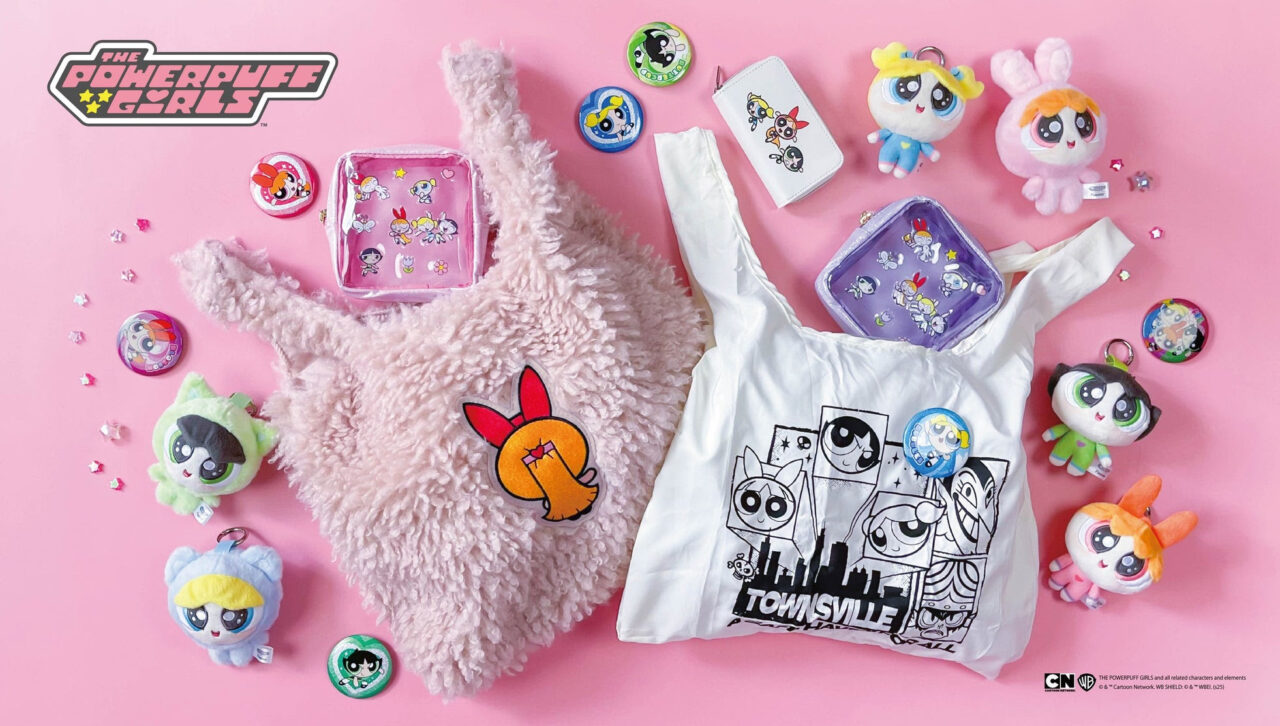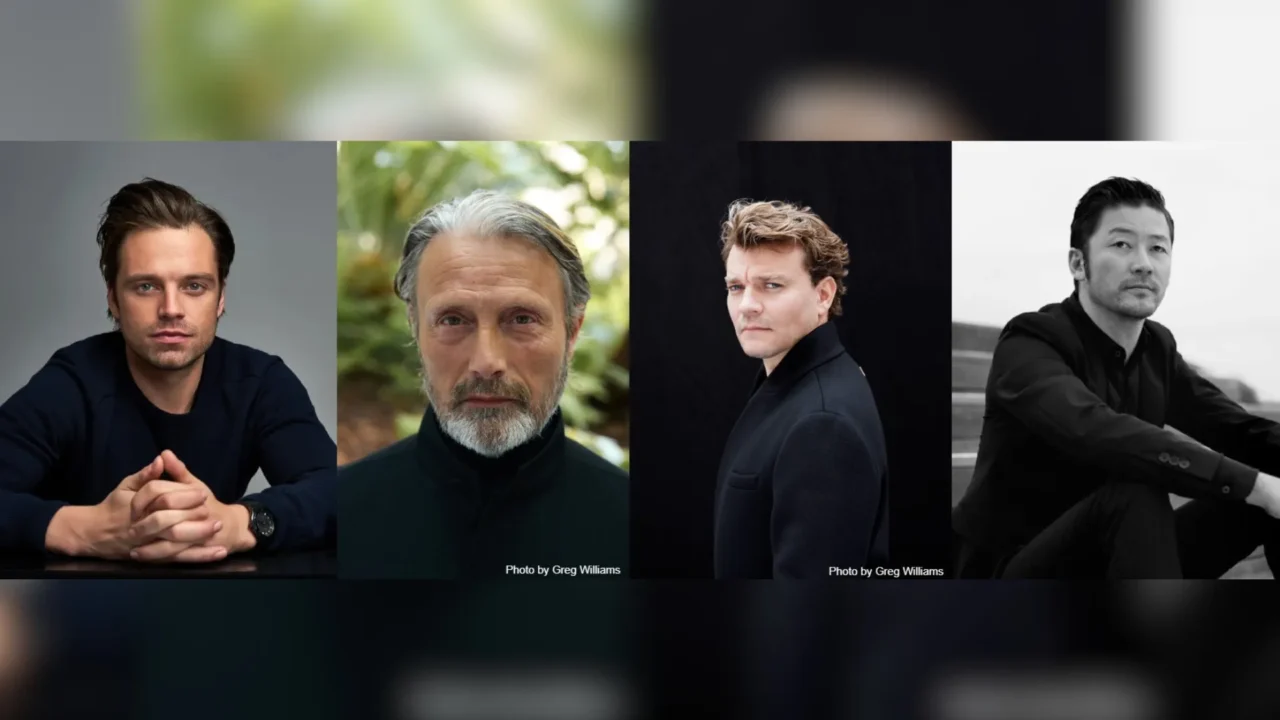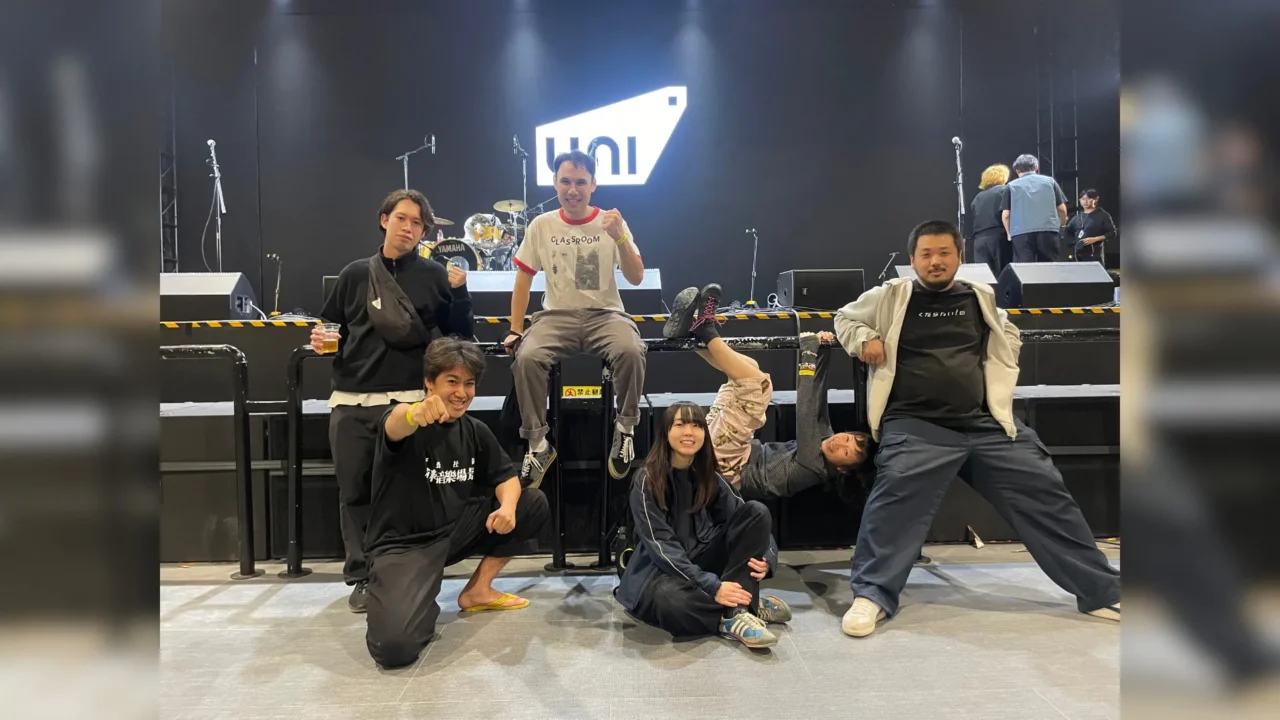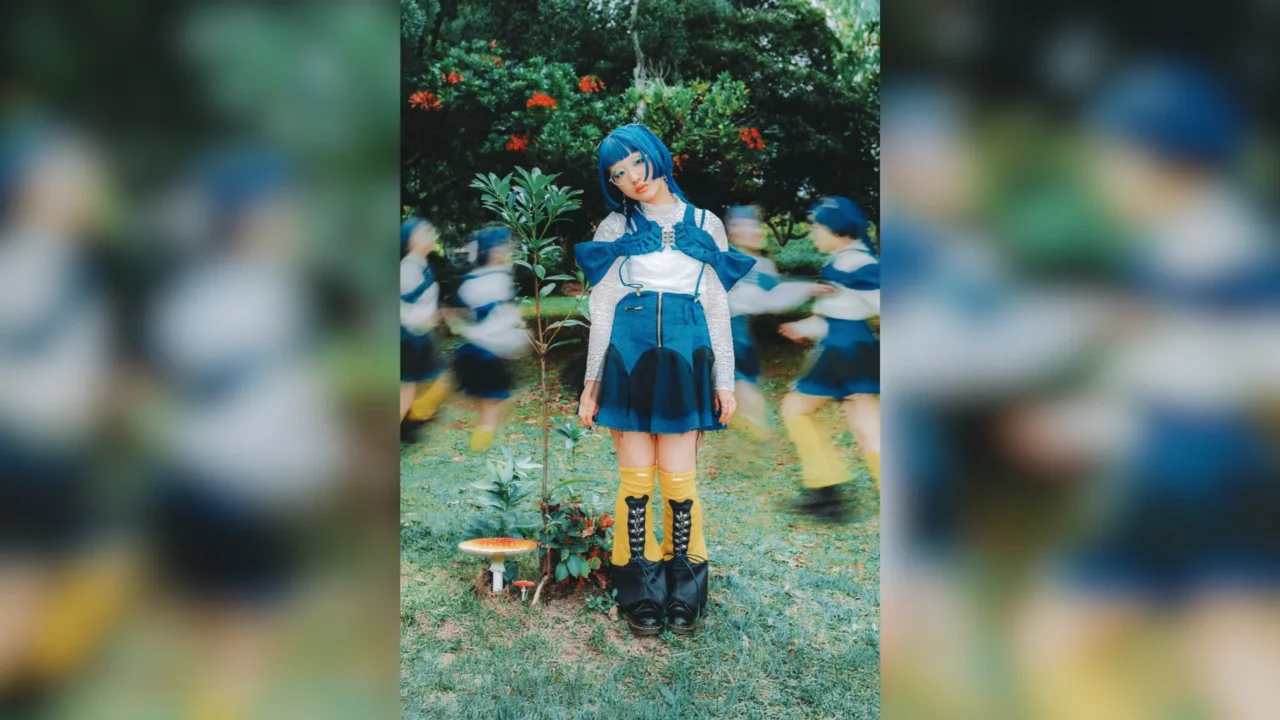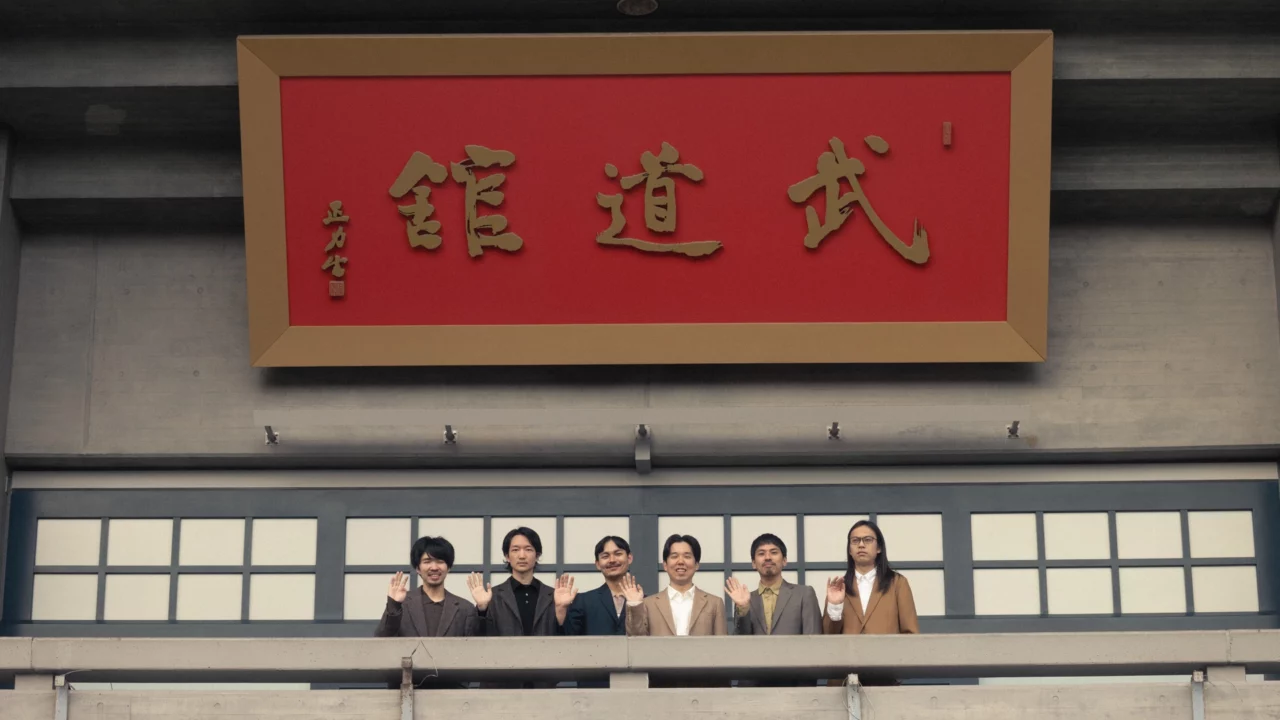Kicking off this series where Kato delves into exploring “himself,” the first guest is photographer Tomoki Kuwajima. Their conversation unfolded in a laid-back, friendly atmosphere, marked by a subtle exchange of perspectives and an easygoing humor.
Join us for this intimate and thoughtful dialogue, which spans a full hour and 45 minutes.
INDEX
The Struggle to Close the Distance Between Two
Could you share how you both first met?
Kuwajima: It was around 2016. Stylist Hiroaki Iriyama was working on a project to create a ZINE, where stylists would style band members. I got invited by stylist Masayo Morikawa. It turned out the band was NOT WONK.
Kato: We went to a studio in Roppongi, and they had us dressed in these incredibly expensive, shaggy outfits.
Kuwajima: The shaggy clothes were shedding so much lint that I was worried if it was even alright, [laughs].

Kato: That was our first meeting. Then, there was a release event for Iriyama’s ZINE at Shibuya WWW, and Kuwashima came to see it.
Kuwajima: I listened to the album they had at the time and thought, “Wow, they’re really cool,” so I went to check it out. Then I went to their live show at Liquidroom in Ebisu. That’s where I heard “Down the Valley.” It starts with that driving four-on-the-floor beat, right? I really love four-on-the-floor, so I thought, “What is this? This is so cool!” [laughs]. After that, I wanted to take photos, so I joined them on their tour.
Kato: You came to all the shows in Sapporo, Osaka, Kokura, Fukuoka, and Tokyo.
Kuwajima: The first one was at Bessie Hall in Sapporo. I felt a bit bad going as a photographer when Sato, who has been taking photos of NOT WONK for a long time, was also there. I hadn’t really taken a lot of live photos myself, but I was excited to be in the front and capture them since I love it.

Commercial photographer and artist. Born in Okayama Prefecture in 1978. Graduated from Musashino Art University in 2002 and studied under Kentaro Kamada. Became independent in 2004 and established QWAGATA Co., Ltd. in 2010.
Do you have any memorable experiences from that tour?
Kato: At that time, we hardly spoke; we were in the same green room, but that was about it.
Kuwajima: I was hesitant to approach you before the performance. I wasn’t sure if it would be appropriate. I didn’t even know how to select the photos; I was thinking it might be better if your face was visible, you know? [laughs] Then, during the “YOUR NAME” event we did at ELLCUBE in Tomakomai, I put together a fan zine featuring the photos I had taken up to that point.

Your relationship started when you joined the tour to take photos, but you seem quite reserved for someone who reached out to sell yourself.
Kuwajima: I tend to be a bit shy. Everyone was younger than me, and I wondered if my actions were okay [laughs].
Kato: I always thought of Kuwajima as someone who was born and raised in Tokyo and really sharp. We chat on LINE, but when we meet in person, we don’t talk much. I mentioned to the members that since he’s always coming to our shows, it feels wrong not to treat him to a meal, but I wondered if he even eats at izakayas [laughs].
Kuwajima: That’s how I’m perceived.
Kato: I mean, he probably doesn’t eat things like French fries, right? [laughs].

Member of NOT WONK and SADFRANK. Born in 1994 in Tomakomai City, where he currently resides as a musician. He formed the rock band NOT WONK while still in high school in 2010. Since 2015, he has released a total of four albums with KiliKiliVilla and Avex Entertainment. In addition, he released an album in 2022 under his solo project, SADFRANK. Kato has also taken on art direction for many of his works.
Kuwajima: But I understand that there’s a bias at play. I want to bridge the gap, but I worry about my own sharp edges hurting the other person.
Kato: So after our live performance at FANDANGO in Osaka’s Juuso, I boldly asked, “If you’re up for it, how about grabbing dinner today?”
Kuwajima: I was like, “Yes!” [laughs].
Kato: We went to a sushi izakaya. It was the kind of place where sushi is served on wooden geta, but since there were four of us, some would definitely be left over. So we decided to have a rock-paper-scissors game to see who would get to eat the sushi.
Thanks to that sushi rec, we quickly became closer. Plus, Kuwajima is really bad at rock-paper-scissors, so instead of treating him, we ended up eating all the sushi ourselves [laughs].
Kuwajima: But if I won and was eating a lot of tuna and salmon roe, that would be super awkward, right? So every time I lost, I thought, “Thank goodness!” [laughs].
That’s quite humble of you.
Kato: A very humble beginning! [laughs].

INDEX
Kuwajima: I Was in an Denki Groove Cover Band in High School
It was your first experience to fall in love with a musician and take his picture, wasn’t it?
Kuwajima: I have mainly focused on commercial photography, so I haven’t really had the chance to take photos for my own projects. That’s why it was so enjoyable. It felt great to shoot exactly what I wanted, especially being able to watch my favorite band perform right in front.
Kato: Since then, you’ve frequently come to take photos of live shows, and you even came to Tomakomai.
What was your impression of Tomakomai?
Kuwajima:I don’t mean to sound negative, but I was drawn to the parts that feel a bit run-down. I’m from Okayama, which is very neatly organized. In Hokkaido, it snows, and it feels like there’s no time for maintenance, which gives it a certain natural charm that I found appealing.

When you were in Okayama, did you go to live houses?
Kuwajima: I was in a copy band of Denki Groove in high school. The band was called “Chinese,” and there were three members: me, a guy named Sakamoto Toruichi, and the son of a construction worker. There was a copy band event that featured Judy Mari, Pistols, Lunacy, and Denki, and the construction worker’s son and the bass player of the Pistols didn’t get along very well, so every time we played together we would have a falling out.
Kato: Denki and the Pistols fought [laughs].
I wanted to ask you this once, but how much do you think the environment and music have to do with each other? For example, a band from Hokkaido is often said to be Hokkaido-like.
Kato: To be honest, I don’t really know. Hokkaido is an absurdly large island, and when people say we sound like Yoshimura of the bloodthirsty butchers, I think they are looking at the Sea of Japan, but I am looking at the Pacific Ocean. But when I went to a festival in Yamagata, Komatsu-san, the drummer of the Butchers, told me after the show that I looked like Yoshimura-san. I was like, “Well, if this guy said that about me, then I guess I can’t blame him (laughs).
INDEX
I followed Shirahama for a whole year. A high school student chasing after a high school punk band by himself” (Kato)
I know we’ve talked about this in various places, but can you tell us how you got started in the band?
Kato: I have always played baseball. My older brother, who is two years older than me, was a special baseball player, and I was just like, “My brother is awesome. So no matter where I went, I was treated like a younger brother, and I was fed up with it. There was a time when I was so fed up with baseball that I used to poke myself in the knee with a baseball bat [laughs]. I thought if I got hurt, I wouldn’t have to go to practice. But I couldn’t hit it that hard because it hurt so much, so I just kept on going and going and going [laughs].
Kuwajima: That part is very junior high school-like [laughs].
Kato: I retired in August of my junior year, but I had no special talents or hobbies, so I decided to just study for the time being and set my sights on Tomakomai Preparatory School. I told my parents I was going to play baseball there! I told my parents I was going to play baseball there. It was like karma to play baseball.

Kato: I had a bass guitar that my brother, who was five years older than me, had left behind, so I used it to play Kuroyume and practice Monpachi songs at home with my classmates. Then, when I was invited by a friend to learn at the home of a senior who was good at bass guitar, a senior from a different high school told me to come to his next concert, and I went to the ELCUBE for the first time right after my junior high school graduation. I went to my first ELLCUBE concert right after my junior high school graduation, and the band of Shirahama, the man who taught me all about music, was also there. As I was watching the show, Shirahama-kun came down to the floor and hugged me through the crowd. And he said, “I’m going to be in a band! I was like, “I’m going to be in a band!
That’s how you got into rock ‘n’ roll.
Kato: I followed Shirahama-kun for a whole year. I was a high school student chasing after a high school punk band by myself. At the time, I was so Shirahama-ism-like that I was embarrassed to be seen by him talking with girls [laughs]. I talked normally at school, but when I was with Shirahama-kun, I maintained a mysterious hard-core attitude. I followed him for a long time, and in November of my first year of high school, there was an event with all the bands from Tomakomai. When I went to see the event, I decided I really had to be in a band, and that’s how I started NOT WONK.

Kuwajima: Where did you come up with the band name?
Kato: We kept talking about how it would be nice to have “NOT” at the beginning. Then I opened a dictionary and found “WONK” in the “W” column. WONK” means “hardworking,” and I thought, “This is good. I didn’t want to be like a diligent student who studies all the time. I thought, “NOT WONK, this is it. That was my first year of high school, in December 2010.
When did you start using a camera?
Kuwajima:The camera itself started in high school, but the reason why I came to Tokyo in the first place was because I wanted to become Naoto Takenaka. Takenaka-san was an actor and stage actor, did comedy in the late-night slot, and also made movies. When I was in high school, I went to see “Tokyo Biyori” and cried so hard I thought I had no choice but to become Naoto Takenaka.
I wanted to go to Tama Art University, where Takenaka went to school, but I thought Tama Art would be difficult because of the drawing requirement. But when I looked into it, I found that there was a place at Musashi Art University where you could enter even if you couldn’t draw, so I took a year off and enrolled. At first, I wanted to be an actor. But I’m a shy person who likes to show off, so I’m not very good on stage [laughs].
An innate shyness.
Kuwajima: In the end, I kept trying, but it didn’t work out, and in the meantime, I had to graduate. In the 1990s, magazines were very active. I was looking at all the cool photos in culture magazines like “H,” “SWITCH,” and “STUDIO VOICE,” so I started taking photos because I admired those magazines, and when I was trying to find a job, I thought that being a photographer might be a good idea. And then I found myself here [laughs].

INDEX
Interaction through creative work
Do the two of you ever hang out together in private?
Kato: We have drinks in Jimbocho and Asakusa, and also in Tomakomai. We had Kuwashima-san come to Tomakomai to shoot the main visual for “FAHDAY.

Kuwajima: About halfway through the second day, I met up with Kato and we had a drink together. I was very happy with the offer for “FAHDAY,” but the order was, “Please shoot what you want to destroy in Tomakomai, Mr. Kuwashima! [laughs]. It was January when we shot the film, and I had just gotten divorced, so I was depressed as hell. That’s why the content was so dark [laughs].
Kato: I was like a driver and we just quietly took pictures together, but on the last day we were driving along a mountain road, dragonflies were hanging out in one place. I wondered what it was, but I found a dead deer. It was below freezing, so it had not rotted, and it was still in a very clean state. Mr. Kuwashima was taking pictures of it with great enthusiasm, and I was looking at them thinking that I would never be able to use them in “FAHDAY” [laughs].

Kuwajima: I think that things that are concrete but you don’t know why they were taken are ultimately abstract. So I kept taking pictures of things like stains on the wall, cracks, and things that made me wonder, “What is this? I kept taking pictures of things that I thought “what is this?
Like the order for the main visual, you are quite conceptual, aren’t you, Kato? Whether it is an event or artwork, I feel like you always have a clear idea of what you are going to do because you have this kind of intention.
Kato: I don’t like to do random trial and error. When I decide to do something this time, I make a logical plan that can be explained from 1 to 10. It’s the same when I make music, like if I mix this and that, it will be like this. If we had this reverb in this era, it would have this texture because it is definitely not digital,” or “If we had this kind of budget for this project, it would sound like this,” or something like that. Sometimes the result is “it’s not right,” but in that case, I try to present it as “it’s not right. I have a rule that I don’t reverse my initial hypothesis and pretend that the result is the same as the original one.
Kuwajima: When you make a song with the intention of making an album, there may be songs that fall through the cracks. Do any of the songs fall out?
Kato: There are quite a few. I think that song would be a great song, but I can’t do it now. Dimen” is made up of only such songs, and there are not many new songs that I wrote.
Kato: I have a lot of fragments in my voice memos, so I just think about how I can cross them with each other. I wonder what I could do to make it interesting. But I don’t like to be like, “I’m going to do something weird! I don’t like to do weird stuff. I don’t like to do weird stuff. I like to put in experimental free jazz-like chiming, or to say that I’m doing a dance-like interpretation, only to have it be four beats per minute. Then the number of choices dwindles, and I think, “Isn’t there anyone who sings in a normal way now? I think, “Isn’t that what nobody is doing nowadays? I compose music in that kind of gimmicky industrial style.

INDEX
Communication about the asparagus in front of you
What do you talk about when you two are together? Do you talk about art or culture?
Kato: We don’t talk about things like that work of art. When we were drinking at a Chinese restaurant in Jimbocho, there was a picture on the wall of a huge asparagus, and I told him that was a great picture [laughs].
Kuwajima: What are the three best movies of your life? It was so cold (laughs). We would go to a bar, drink rum, and say, “This tastes good. Let’s go to a bar, drink some rum, and say, “This tastes good.
It’s all about the immediate.
Kato: We get excited about what’s in front of us. I have a childhood friend named Hagari. We went to junior high and high school together, but he doesn’t play music and doesn’t listen to music at all. But he kept going along with my high school routine of going to Book-Off and buying jackets. He would recommend me to buy a new one, saying, “Shuhei, isn’t this a good one? I trust Hakari a lot, so I bought it and listened to it. I bought it and listened to it, and when he said, “That was good,” I just said, “Oh, really? I like that feeling. I really like that feeling.
After listening to it for 45 minutes, I asked him how he liked it, and he said, “It’s cool. After listening to it for 45 minutes, I asked them how they liked it, and they said, “It’s cool,” and we all agreed [laughs]. We didn’t talk about specifics at all. We talk about things like, “This road is a little bit downhill,” or “This is a school zone, but there are no guardrails, so it might be a little dangerous in the evening” [laughs].
Kuwajima: There are too many things that make sense, and I really don’t need that kind of stuff. I really don’t need to talk about who did what or how this thing happened. Instead, it is more trustworthy to talk about what is in front of you in a straightforward manner. There is really no one who can communicate like that. So really, it’s just asparagus. Asparagus is fine. Because it’s asparagus. Just saying, “I like the picture of the asparagus,” is fine.
Talking honestly about what you think of what you see in front of you is the ultimate communication.
Kuwajima: I don’t think speaking is the only way to communicate. Gestures, the way one’s body is turned, the way one’s hands are placed, etc., are all part of communication.
Kato: There is a sense of trust that comes from things like clothing size, etc. ARIKA-kun, a friend of mine who is a painter and tattoo artist, once told me something that made me very happy: “When I saw you puking on the balcony of PROVO, I thought, ‘Kato, you are a trustworthy guy. I thought, “I’m going to be liked by this person. I was very happy to know that he trusted me because of something so close to a physiological phenomenon, and not because I was trying to get him to like me. I felt like I could like and trust someone through that kind of experience.
I feel that communication is a major theme for you.
Kato: I feel like that is the only theme I have in my mind.
Kuwajima: Where do the lyrics come from?
Kato: There are not so many things I want to say. For example, right now there are many things like Palestine, Ukraine, and so on. What do you think about each one of them? If you ask me what I think about each of them, I am sure that everyone has their own opinions about what is wrong and what is good. That is what I want to touch on. I think there is a word for that origin, and that is my theme when I write lyrics. That is the only way I can write lyrics.
That’s really all I want to do. Every time I release my work, I feel that it is being archived, and when I put it all together, it becomes a portfolio. When I put them all together, I find that there are pieces of the same color or the same shape from different periods, and I have the sense that they are all connected. That is interesting. Even if the tunes are different, the feelings are probably the same. So what I am saying is always the same, because I just want to follow the original heart.
I just want to follow my original heart.
Kato: I think it’s important to speak out on social networking sites, and I do it, but there are so many things that need to be addressed. I really want to smash them all together. The people who are actually harmed are different from each other, but I feel that I can smash them all together with the same feeling in my heart.
Why did you choose Kuwashima-san for the first installment of this series?
Kato: I told Mr. Kuwashima that I was going to write a series about things that I value, but to be honest, I don’t know what those things are. I do music because I don’t know, and I express myself to confirm what is important to me. When I am with Mr. Kuwashima, I only talk about what is in front of me, and when we have sessions about these senses, I feel like we are really getting along. So, I am sure that anything can be used as a subject. Whether it is asparagus, politics, movies, or music, there is something good about a relationship where you can talk about what is in front of you from your own perspective. I think that is very important.
Kuwajima: If you were a photographer, when you talked about asparagus photos, you would probably say something like, “There was this work by a German photographer before the war. That is because there is a common language there. But with photography and music, there is no common language. The lack of a common language is a kind of game, and I think it is very interesting that we concentrate our nerves and choose the right words. Because there is no common language, the conversation becomes one of matching senses.
Kato: When there is a picture of asparagus, people get excited and say, “Asparagus is so bad. It is a game to see what kind of viewpoints we can come up with. I feel that this is the most primitive conversation for me. When I am talking with Kuwashima-san, I feel like I have a strange switch. I don’t know if I’m on or not, but I feel like I’m sensitive to something.
It was interesting.
Kato: It was interesting. Talking is interesting, isn’t it?
Kuwajima: Talking is interesting, isn’t it?
Kato: After talking so much, Sime said, “It’s interesting to talk” [laughs].

FAHDAY2024

Date: October 12, 2024 (Saturday)
Location: Hokkaido / Tomakomai Civic Hall (Area_1 / Area_2 / Area_3 / Area_4)
Time:
- Area_1: OPEN 12:00 / START 13:00
- Area_2, Area_3, Area_4: OPEN / START 11:00
Ticket Prices:
- Area_1: U-23: ¥4,500 / FAHDAY MEETING Ticket: ¥5,000 / Early Bird: ¥6,000 / General: ¥7,000 / At the Door: ¥7,500
- Area_2 / Area_3 / Area_4: Free
Performers:
- Area_1: NOT WONK / kanekoayano / 踊ってばかりの国 / EGO-WRAPPIN’
- Area_2: WHITELIGHT / 後藤正文 (Note: “Recent Report I” 3D Sound Exhibition) / マレウレウ / GAK / tommy△
- Area_3: DJ SADA / DJ Yogurt / 君嶋麻里江 / DJ FANTA / DJ FUMINN / IZAKAYA草-SOU- / おうちコーヒー / ISHIBASHI COFFEE / いしかわぱん / 開運ラーメン / 焼き菓子 かぎねこ / COFFEE KITCHEN TAPIO / FAHDAY MEETING OFFICIAL BAR (CLUB ROOTS / Bar Old / Bar Base) / ARCH / Boogie / meshi to oto / Pansal / TONCINI / のらのキンパ / 鮨鷹 / poponta cafe / さんぼんぎ / Happy Hokkaido Kitchen and more
- Area_4: To be announced
Organizer / Planning: FAHDAY MEETING
(加藤修平 / IZAKAYA草-SOU- / おうちコーヒー / 株式会社 Bigfish / CLUB ROOTS / 立呑キング / 苫小牧ELLCUBE / Bar Old / Bar Base)
Production: FAHDAY MEETING / 株式会社 WESS / Others
Sponsors: Ticket Pia
Support: Tomakomai City / FM NORTH WAVE
OFFICIAL HP: fahday.com
OFFICIAL X: twitter.com/FAHDAY_official
OFFICIAL Instagram: www.instagram.com/fahday.official/
<Ticket Details>
◾︎ FAHDAY MEETING Ticket: Available until sold out
Sales Locations: IZAKAYA草-SOU- / おうちコーヒー / CLUB ROOTS / 立呑キング / 苫小牧ELLCUBE / Bar Old / Bar Base
◾︎ General Ticket Sales:
U-23 Ticket / General Ticket
Sales Period: July 6 (Saturday) 10:00
URL: w.pia.jp/t/fahday2024/
<CAMPFIRE “FAHDAY2024” Project Page>
URL: camp-fire.jp/projects/view/747884
<FAHDAY MEETING>
Co-organizers of FAHDAY2024:
IZAKAYA草-SOU-, おうちコーヒー, 株式会社 Bigfish, CLUB ROOTS, 立呑キング, 苫小牧ELLCUBE, Bar Old, Bar Base
















